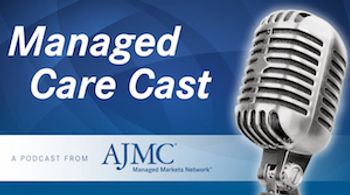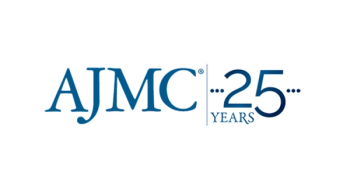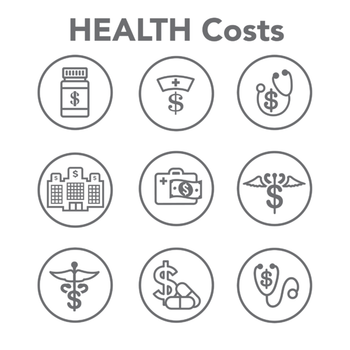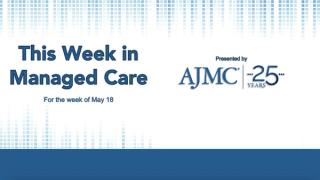
Employers
Latest News

Latest Videos
CME Content
More News

In a webinar moderated by Thomas Parry, PhD, president of the Integrated Benefits Institute, an employer panel discussed value, application, and barriers to strategies involving the integration of employee needs and interests into benefit programs.

Dr Jeremy Whalen Cites Patient Safety, Total Cost of Care as Key Policy Goals for Prime Therapeutics
Patient safety is paramount when deciding how to roll out a new program or even if a program should be developed or not, said Jeremy Whalen, PharmD, BCOP, specialty clinical program director for oncology at Prime Therapeutics.

Amid the COVID-19 pandemic, patients, as well as their physicians, have been put at risk while seeking or providing other healthcare. While several barriers to care have inhibited telehealth in the past, recent actions by CMS, HHS, and other governing bodies have sought to expand its availability nationwide. NYU Langone Health's telehealth service Virtual Urgent Care connects members with clinicians via phone or tablet to provide care without potential coronavirus exposure.

Co-pay accumulator adjustment programs can have different effects for individuals with varying health plan types or income levels, explained Bruce Sherman, MD, chief medical officer of the National Alliance of Healthcare Purchaser Coalitions.

Ongoing studies are aiming to determine how co-pay accumulator adjustment programs affect individuals’ medication adherence and persistence, with the hope that the results will inform employers on more equitable benefits strategies, according to Bruce Sherman, MD, chief medical officer of the National Alliance of Healthcare Purchaser Coalitions.

On this episode of Managed Care Cast, we speak with April Todd, senior vice president, CORE and Explorations for CAQH. We discuss CAQH CORE’s recent approval of a 2-day rule for health plans in requesting additional supporting information from providers and making final determinations on prior authorization requests.

In nonprofit hospitals within states that expanded Medicaid, significant decreases in uncompensated care was reported, with additional increases in unreimbursed Medicaid expenses indicating that Medicaid expansion had no substantial effect on community benefit spending.

Out-of-network primary care may be associated with higher per-beneficiary spending in Medicare accountable care organizations (ACOs), reported a recent study published in Health Affairs.

Co-pay accumulator adjustment programs will probably not be used for high-cost therapies because deductible amounts are trivial compared with their price tags and because these novel treatments are used for small populations, said Bruce Sherman, MD, chief medical officer of the National Alliance of Healthcare Purchaser Coalitions.

Reference-based pricing is about to get a serious reboot, with even more healthcare purchasers engaging in the practice and those that are already using it reviewing existing contracts with increased scrutiny.

Cardinal Innovations Healthcare is the largest specialty health plan in the country, insuring more than 850,000 North Carolinians with complex needs. Using a community-based model of care management, Cardinal Innovations has led the way in developing services, processes and solutions that improve the lives of our members and their families. Recognized for operational excellence, innovative solutions and superior outcomes for members, accuracy and speed of payments to providers, and cost-effective funds management, Cardinal Innovations is a leading healthcare company in the United States.

As today’s employers try to balance the need to provide healthcare for their workers while keeping an eye on cost, they are banding together to learn more about cancer care and how to gain value for the millions they are spending. Last fall during the Community Oncology Alliance Payer Exchange Summit, leaders from employer and purchasing groups shared experiences from their members in a roundtable discussion.

According to Bruce Sherman, MD, chief medical officer of the National Alliance of Healthcare Purchaser Coalitions, there are several ways that employers can alleviate the impacts of co-pay accumulator adjustment programs on their employees, including by increasing awareness of the programs, expanding preventive drug lists, subsidizing benefits for low-income workers, and considering the true financial impact of these programs.

Workers with health insurance through their jobs saw out-of-pocket costs rise 14.5%, or $114, between 2014 and 2018, and also increased the use of psychiatry services and substance use facilities.

The evolution of data in healthcare in combination with policy advancements demonstrates how far the field has come but also brings up new challenges.


A study shows young adults prefer short-term perks to long-term benefits; $4 million has been stolen from Mississippi's welfare fund; Los Angeles has reported 5 confirmed cases of measles.

While co-pay accumulator programs may appear to save employers money, they may lead to medication nonadherence if a prescription becomes too expensive for a patient to fill, which could potentially result in higher expenditures, cautioned Bruce Sherman, MD, chief medical officer of the National Alliance of Healthcare Purchaser Coalitions.

This week's paper from our editors-in-chief presented the idea of tying a prescription drug's cost-sharing to its clinical value to the patient.

V-BID X for Employers: A Framework Designed to Promote Employee Access to High-Value Drugs, Services
A. Mark Fendrick, MD, director of the Center for Value-Based Insurance Design (V-BID) at the University of Michigan and co-editor-in-chief of The American Journal of Managed Care®, and Suzanne F. Delbanco, PhD, executive director of Catalyst for Payment Reform, discuss V-BID X for employers, a plan constructed through benefit-design and payment reform that works to promote high-value services and deter low-value care.

Researchers from the Employee Benefit Research Institute (EBRI) estimate that if hospital unit prices matched physician office (PO) prices of cancer drugs, holding drug mix and treatment intensity constant, commercial insurers would have saved $9766 (45%) per user of these medicines in 2016, with statistically significant relative differences ranging from 128.3% (nivolumab) to 428% (fluorouracil).

Co-pay accumulator adjustment programs are meant to ensure that individuals are responsible for the full amount of their insurance deductible, which should help promote healthcare consumerism, according to Bruce Sherman, MD, chief medical officer of the National Alliance of Healthcare Purchaser Coalitions.

Innovaccer’s survey-based report titled, “The Science of Value-based Care: An Industry View,” details the current state of readiness of healthcare organizations in employing value-based care, while also providing tips on how minor changes in one’s system framework can contribute to clinical excellence and technical efficiency.

Population health models that include social determinants of health can help employers design more strategic benefits that will provide an effective solution for all individuals who receive that insurance, said Bruce Sherman, MD, chief medical officer of the National Alliance of Healthcare Purchaser Coalitions.

Rising drug costs in the United States are a pressing concern not only for patients who need to receive those drugs, but also for employers. The Employers’ Prescription for Affordable Drugs is a coalition that aims to tackle this problem by working with policy makers and stakeholders to encourage and facilitate more transparency, competition, and value in the healthcare system.















































